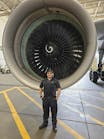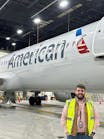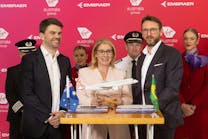Asiana Boeing 777 crash puts air safety innovations to the test
July 16--In an era when U.S. airline accidents are rare, the crash landing of Asiana Flight 214 has given two decades of safety improvements a chance to demonstrate its worth.
As tragic as the loss of three young lives in the crash is, 304 people lived -- a 99 percent survival rate.
"The tremendous safety enhancements that have been made over the past 30 years were put into play in this tragic event," said Larry Rooney, executive vice president of the Coalition of Airline Pilots Associations (CAPA), a trade association of professional pilots. "It was a tragic loss of life but nowhere near what you would have anticipated."
Among the safety features that helped so many passengers survive: stronger, fireproof seats; fire retardant materials inside the cabin and around the cargo areas; illuminated strips on the floor leading to the exits, and training of flight attendants to speak up -- and pilots to pay attention -- when they notice something wrong.
The Boeing 777 that crashed July 6 has a record "of being one of the safest airliners in the sky," said Kevin Hiatt, president and chief executive officer of the Flight Safety Foundation.
"The good news story about this particular accident is about the passenger survivability of this aircraft and other new modern aircraft with same type of design features," he said.
That said, there are problems to study: some escape slides deployed inside the aircraft, momentarily trapping two
flight attendants; evacuation was delayed for 90 seconds; and the lap seat belts in most of the seats injured some passengers, even as they also helped save their lives.
"Accidents are very rare, and this one will be closely looked at," said Todd Curtis, who worked on safety features of the 777 at Boeing and who now operates AirSafe.com, a web site that provides information for travelers on safety and security. "There may be industry regulatory changes coming out of it."
The airplane that struck the seawall at San Francisco International Airport, breaking off its tail, had its maiden flight on Feb 5, 2006, according to a database of the Flight Safety Foundation, so it was manufactured when safety features developed in the late 1980s and 1990s were being incorporated into new airliners. Among them:
STRONGER SEATS: The seats on the Asiana aircraft were "16G" -- able to withstand 16 times the force of gravity, in accordance with a Federal Aviation Administration regulation. Firefighters entering the aircraft found the seats toward the front of the aircraft "almost pristine, like you could fluff the pillows and almost go out," National Transportation Safety Board Chairwoman Deborah Hersman said in a press briefing. Toward the rear, the damage was more severe, and seats were "jumbled," she said.
Hiatt said passengers may have climbed over the seats, pushing them forward.
ESCAPE: The escape path lighting on the floor worked -- a feature added to aircraft built in 1986 and later -- and the public address system was still active so a vital evacuation order could be announced. FAA rules say passengers should be able to evacuate the aircraft in 90 seconds, even if some exits are blocked.
SAFER MATERIALS: Although the aircraft burned, passengers had time to escape. In the 1980s, the FAA issued regulations requiring fire-resistant materials inside the cabin and insulation around cargo compartments. Improvements continue today.
"In a fire that burns through the top of the aircraft, the heat is extremely intense," said Hiatt of the Flight Safety Foundation, "but if you can slow that down to a point where you can get the aircraft evacuated, it makes all the difference in the world."
Also, materials inside the passenger compartment are designed not to crack and create sharp surfaces. "Everything in the airplane is engineered for the ultimate design of safety," said Thomas Anthony, director of the University of Southern California's Aviation Safety and Security program.
TRAINING: "The crews are better trained than they were," said Rooney of CAPA, who has flown for 30 years. That includes flight attendants.
Crew training now emphasizes communication over protocol when something goes wrong. The order to evacuate Flight 214 was given after a flight attendant noticed fire outside the cabin and passed word to the captain, who reversed an earlier instruction not to evacuate.
But investigators will want to know why there was a delay. "When the aircraft has gone through that crash landing, the chances of a fire starting are almost 100 percent. Why not order an evacuation?" asked Vahid Motevalli, director of the Center for Technology Development at Perdue University and co-author of a 2005 study of milestone aviation accidents.
TECHNOLOGY: Improved navigation technology and better instruments for flying in bad weather have made flight much safer.
Pete Carey at 408-920-5419 Follow him on Twitter.com/petecarey
Copyright 2013 - San Jose Mercury News



